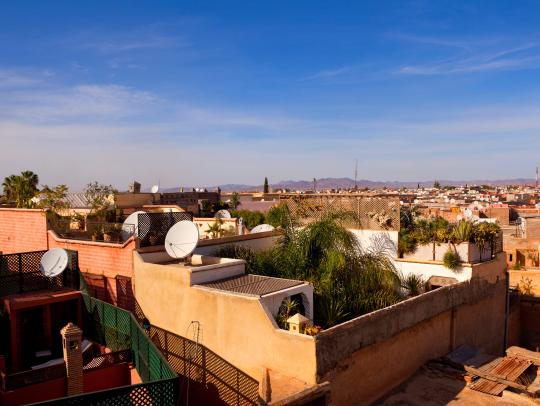According to research, if a developing nation has 10% more broadband connectivity, it can result in a 1.38% GDP growth for that country. When countries are more connected to each other, they are more likely to trade – and where there’s more trade, more resources become available to influence positively on the economy.
Because satellite has the advantage of reach, it can efficiently connect the majority of the 700-million unconnected people, as well as the many growing economies in Africa.
Patching digital gaps
Africa has solid, long-term growth potential to improve content delivery, increase telecoms offerings and provide better services to the people – and one such digital route is through the fibre networks being rolled out to connect the western world to Africa. But what it does not do however, is bridge the digital divide within Africa, between urban and non-urban areas.
Satellite closes this gap to allow African goods and services to reach the world quickly. Artists living in rural areas, for example, can expose their work much earlier to a global audience through e-commerce, via rapidly available satellite services as opposed to the rollout of physical cables across swaths of rural locales.
Yet satellite connectivity helps boost a country’s economy in more than one way. For instance, the simple fact that healthy people contribute more to the economy is far from simple to endeavour, as Africa only has 0.02 doctors per 1,000 inhabitants. Here, satellites supplement the shortfall by efficiently providing online consultations and reports to rural areas, so that local doctors have support from experts around the world.
Case-in-point: South Sudan
Independent only in 2011, the country inherited one of the least developed telecommunications and Internet markets in the world, with only around 23% mobile penetration in 2016, says research firm, BuddeComm.
For the young nation, this presents a digital chasm between the haves and the have-nots, and the government is determined to cross the divide with broadband connectivity. This aspiration is a boost of confidence for the business community, and it piqued the interest of MADA, a Middle Eastern company with a large geographical footprint.
A provider of multiple telecommunications services across Africa, MADA sees the potential for high quality Internet services, both for end-users to stay connected to the digital world, and to support the daily operations of multinationals, businesses and non-profits organisations.
To this end, it signed a multi-year operations contract with SES for a 115Mbps Internet capacity link, obtained from the C-band hemi beam of SES-5. Supplied through SES Betzdorf teleport facilities, the tier 1 Internet provider with extremely high service and teleport availability, this partnership chain will enable Internet connectivity to MADA’s customers in the country, especially in areas where terrestrial infrastructure is currently non-existent.
Fast facts
SES enables connectivity to the unconnected and supports economic growth with tailored network solution. It is the partner of choice for service providers, with global experience in:
- Operating 53 GEO satellites over 20 global teleports, augmented by 12 MEO satellites from O3b
- Combining GEO wide beam, GEO HTS and MEO HTS capabilities in a differentiated offering
- Serving over 700 broadcasters, enterprises, institutions and governments in more than 130 countries
- Offering SES Enterprise+ Broadband in five African nations. This product is designed to deliver high-speed broadband that’s simple, affordable and capable of supporting almost every business application.

